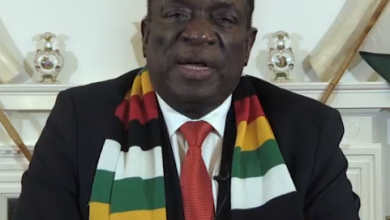Use of mining resources during elections

By ZimRights
The sector is a source of patronage, “vote buying” and financing for elections. To maintain elite cohesion within the ruling party, control, and maintenance of access to opportunities in mining be it at formal or informal levels across the sector’s value chain is important.
This is done corruptly and “legitimately”. Populist policy pronouncements, actions and relaxed enforcement of environmental and other regulations including huge promises of “economic empowerment” through mining often characterise election season. Being a key economic sector, mining also provides funding for electoral campaigning overtly and covertly.
Big mining companies it appears are pressured to conduct economic empowerment and Corporate Social Investment (CSI) initiatives by Zanu-PF politicians. There is a pattern. Community Share Ownership Trusts (CSOTs) largely associated with mining propped up the Zanu-PF campaign during the 2013 elections. The CSOTs were launched at a frenetic pace towards the 2013 elections as community empowerment vehicles with projects rolled out quickly such as clinics and schools to create an impression of equitable benefit sharing.
After the 2013 elections, the momentum behind CSOTs was lost and their legal backing was stripped in 2018. It is worth mentioning that some big donations by diamond mining companies amounting to US50 million proved to be fake and even the former President, the late Mugabe was allegedly duped when he launched Marange-Zimunya CSOT. Other commitments lacked in detail like the legal status of the CSOT or the financing mechanisms for the community shares perhaps deliberately so.
The transparency and accountability around negotiation, sealing and performance monitoring of mining deals is a big challenge in Zimbabwe. This even though the Constitution, under section 315 (2) (c) requires an Act of Parliament to guide negotiation and performance of mining agreements to promote transparency, honesty, cost-effectiveness, and competitiveness.
Taking advantage of this loophole, the ruling party has been accused of abusing negotiation and performance monitoring of mining contracts to illicitly secure financing for its activities. It is alleged that in 2008, Anglo-American released claims in exchange for empowerment credits or a cash equivalent of US142 million was sold by the government of Zimbabwe for US100 million, the money was used to oil Zanu-PF’s presidential rerun campaign at the height of economic malaise.
Marange diamonds allegedly financed Zanu-PF’s 2013 electoral campaign. History repeated itself and it is highly probable that the same trick was used for the 2018 elections. Then, Zimplats released land to the government in June 2018, a month before the harmonised national elections. The platinum claims were quickly transferred to Karoo Resources in a murky deal. The Centre for Natural Resource Governance (CNRG)’s report alleges that some of the undisclosed mining contracts contain financial commitment/donations clauses towards the ruling party.
Quite often, ruling party functionaries utilise the largesse from mining interests rather than the party’s central pot to fund their own campaign. This places them at an enormous advantage compared There are instances where Zanu-Pf politicians out of the largesse from gold mining have been able to buy votes and wrestle constituencies and wards long held by the opposition. National Gold Buyers Association of Zimbabwe (NGBAZ) Chairperson Scott Sakupwanya, a member of Zanu-PF’s fundraising committee, is said to be an example. He managed to wrestle the Ward 21 Councillor seat in Mabvuku Harare in March 2022. That seat has been a preserve for the opposition since 2000. Scott it is alleged, had delivered, through his company Better Brands, slightly more than seven tonnes of gold to Fidelity Gold Refiners (FGR) in the prior year with an estimated value of US460 million.
Considering the gold incentive scheme introduced in 2021 by the Reserve Bank of Zimbabwe to stifle illicit gold market and rake in more gold to the formal market, Scott could have been well-resourced for his campaign. For every 20 kgs of gold delivered, a 5% incentive applies. Scott has been contesting for the same councillor seat without success since 2013. What tipped the scale this time around is the massive and brazen vote-buying manifesting through truckloads of food hampers for the electorate. Even on the day of elections, voters were given chicken and chips from a popular fast-food restaurant after the vote. While money played a key factor, the influence of other factors like massive voter apathy and the internal conflict within the opposition cannot be ignored.
Mabvuku is an interesting case study for mining revenue and election funding. Apart from Scott, Mr Godwills Masimirembwa the former chairperson of the Zimbabwe Mining Development Corporation (ZMDC), a state-owned entity that had a 50% stake in all but one diamond mining companies operating in Marange was an aspiring MP for Mabvuku constituency on a Zanu-PF ticket in 2013. His campaign was well-resourced even though it failed. It is not surprising that the entanglement of mining and elections continued the trend in 2018 and is most likely to continue for the 2023 elections because of the increased country’s dependence on mining. In any case, Zanu-PF will be represented by Scott Sakupwanya.
The government launched an ambitious 5-year plan to grow the mining sector earnings to US12 billion in 2023, up from US2.7 billion earned in 2017. While this is commendable from a developmental point of view, it is important to observe how such initiatives oil the ruling party’s patronage machine by creating enough spoils for elites to share and therefore maintain coercion. During interviews sources pointed out that miners, whether involved in politics or not, are happy to finance activities of the party to protect their interests. Some ruling party politicians see their continued accumulation in the sector as intricately tied to power retention, and vice versa.
Parties do approach big mining corporates, small scale miners, artisanal miners, buyers and other players in the industry for funding of party activities. It is said that requests targeted at corporates are made at the highest levels. It is common for party leadership at district and ward levels to approach small scale miners and artisanal miners to support once off activities like a rally or committee meetings. The opaque way this is conducted raises questions about transparency and risks for corruption. Parties also ask and use the infrastructure of mining companies like stadiums and schools. Of course, as one would expect, it is easier for the ruling party to secure these compared to opposition parties, so this raises questions about an even playing field. It also raises questions about coercion as some actors in the sector feel coerced to donate fearing reprisals. ASSM who do not support or attend rallies have been threatened with expulsion or withdrawal of claims. Sponsors and buyers may not necessarily be Zanu-PF, but they play along for expedience and protection.
While on paper, one must fulfil all the legal requirements to undertake mining activities, the political risks loom larger than legal compliance risks (interview with a miner in Bindura). For miners to operate legally, a mining permit, environment impact assessment (EIA) certificate or Environmental Management Plan (EMP) are some of the basic requirements. But the compliance officers from the Ministry of Mines and Mining Development (MMMD), Zimbabwe Republic Police (ZRP), and Environmental Management Agency (EMA), among others, have their hands tied when the political card of Zanu-PF is played. It is common to find most ASMers wearing Zanu-PF t-shirts with Mnangagwa’s face, a signal that party protection is vital. Even opposition members that are involved in ASGM wear Zanu-PF regalia to protect their interests.
The high demand for green energy minerals has added a new dimension to ASM in Zimbabwe with lithium discoveries in Mberengwa fuelling rushes by thousands of ASM.






